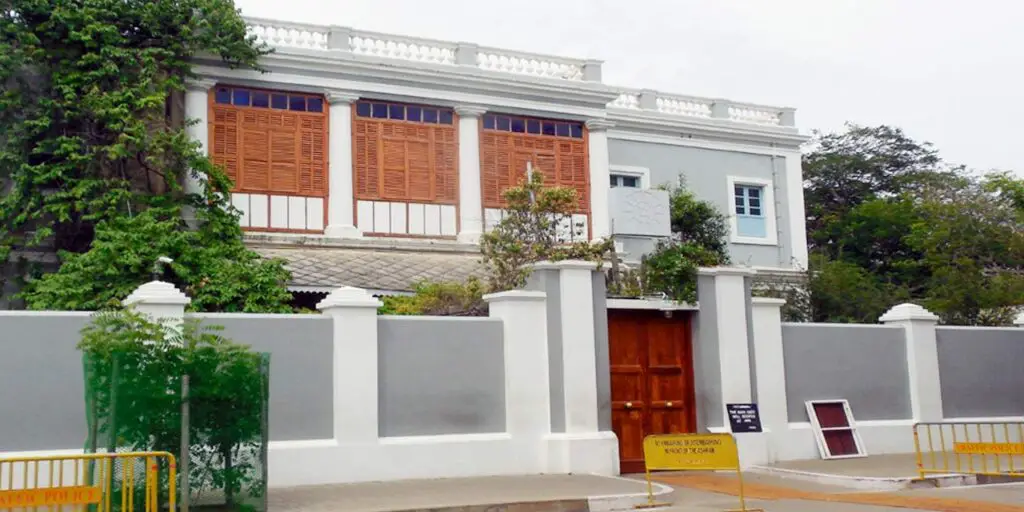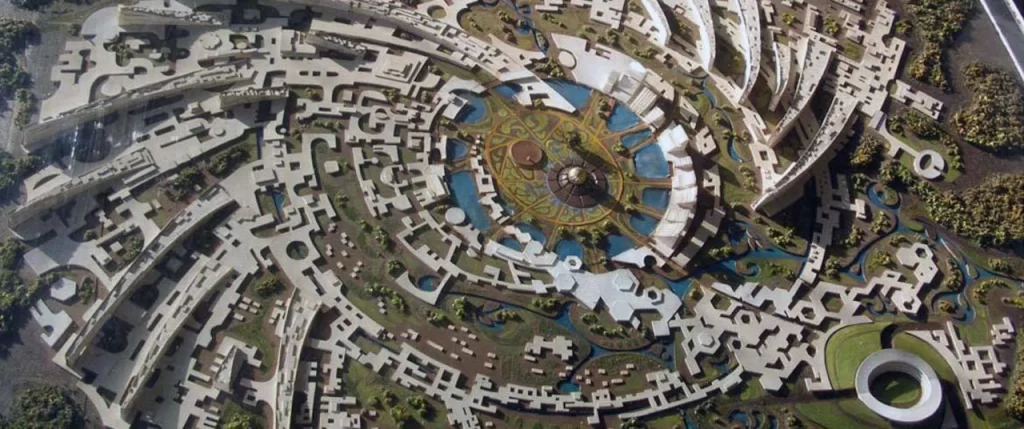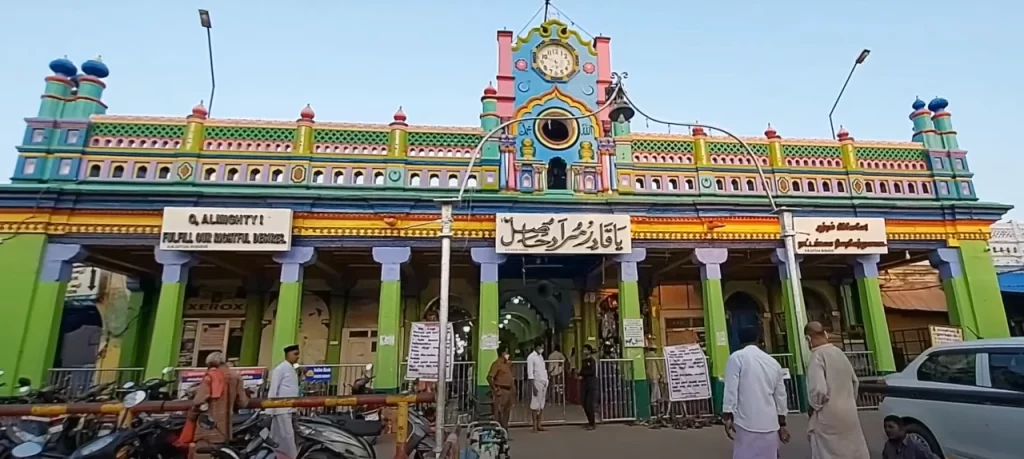When India became independent, certain areas like Hyderabad and J&K maintained their independent status. In addition to this, the states of Pondicherry, Goa, Dadra, and Nagar Haveli also continued to be ruled by France and Portugal. Later, while Hyderabad and J&K merged with India, others became Union territories. I was posted to Pondicherry in February 1982 as the Group Commander of the NCC. I had heard a lot about the place and was eagerly looking forward to the posting. Since NCC was a part of the curriculum in schools and colleges in all the places, my jurisdiction included the entire UT of Pondicherry. While Karaikal is 200 km down South and is connected to Pondicherry by road, others are only accessible by train. So, I had to do quite a bit of traveling during my 2 and 1/2 years of tenure in Pondicherry. In the process, I got to visit most of the places of interest in the southern part of the country.
Chandannagore, in West Bengal, was also a part of Pondicherry till February 1952. After India gained independence in 1947, the French government held a referendum in June 1948 to know the will of their people. 97 % of the population voted for a merger with India, and finally, in February 1951, it formally became a part of India. The town had a rich cultural background and was at one time more popular than Kolkata. They had their own municipality and were famous for their neatness and well-laid-out roads. The town changed hands with the British in the past, with regular wars being fought for its possession.
Culturally, Pondicherry is similar to Tamil culture and practices, but French influence is visible in almost all of its activities. Christians form a sizeable part of the population, but when it comes to any social event, the temple is the point of initiation. Even in marriages, the first ceremony is done in a temple and then followed by a wedding in a church. So, one gets to see an excellent example of a composite and inclusive culture in Pondicherry. The languages spoken are Tamil, French (limited percentage, the number of speakers is diminishing by the day) and English. Hindi is nonexistent.
Quite a number of locals in eminent positions continued to remain the employees of the French government. I remember meeting a judge who was posted in Paris while in service and was back in Pondicherry after retiring – he used to receive a hefty monthly pension of Rs 1.25 lacs. Another judge who refused to be posted to Paris on elevation due to personal reasons was also getting around 65,000 INR on retirement.
Other government employees who were in service at the time of independence and retired also received a good pension. An ordinary clerk for example, got Rs 3500/- monthly. This created an imbalance in society as people who joined service after independence received much less salary than them. A French pensioner who went shopping would never bargain in local market and this would push the price of a commodity up, much to the dislike of others.
The locals are docile and law-abiding people. So, there are not many law and order problems. They hit the bottle hard, though, even during the daytime, and it is common to see a person walking in a zig-zag manner on the road and people in moving vehicles carefully avoiding them. Even the police would look the other way and not trouble them unless there was a law and order problem. The reason for all this was that on any street in Pondy, you could easily find 3 to 4 liquor shops. The price of liquor in Pondy was much lower than what we had in our army canteens. The police were very different in appearance from other states as they wore the uniform of pre-independence days with their typical French cap.
French influence can be seen in almost every piece of architecture, whether an office building, a residence, or a monument. Amongst places of interest in Pondy is the Aurobindo Ashram, the international village of Auroville located at a distance of 16 km from the town. There is a museum with a very impressive collection of artifacts. Romain Rolland Library is spread over a large area and is a hundred years old. They have an elaborate collection of books for all ages. In fact, whenever my children came on vacation to Pondy, the library was one of their favorite places.
AUROBINDO ASHRAM
The Shri Aurobindo Ashram in Pondy is an institution by itself. It was founded by the Mother (Mirra Alfassa) and Sri Aurobindo sometime in 1935. The story goes on to say that the Mother had a dream of Sri Aurobindo while in her teens. She then asked a friend of hers who was going to India to find out about him. That person found that Sri Aurobindo indeed existed, and that is what brought the Mother to India in 1914. She met him and became his disciple. Later, when the war broke out, she was forced to leave India and came back only six years later. A substantial part of the buildings in Pondy belong to the Ashram, where the Mother’s and Sri Aurobindo’s followers live.

The Mother and Sri Aurobindo are buried in the same monument. It has two separate chambers, made of white marble. The devout do not call the monument as a grave but a place where they both are resting. Today, Pondy has become an important destination for spiritual seekers as well as for tourists. Thousands of people from all over the world come to visit the Ashram every year.
EYE HOSPITAL
An interesting institution in Pondy is their eye hospital. Their eye care treatment includes a series of exercises, followed by a treatment session of staring at a dim lamp in a dark room. This is followed by palming, where you close your eyes with your palm for about 5 minutes to relax the eye muscles. This is followed by an eye wash with warm eucalyptus water and then a drop of medicated honey in both eyes. The final step is staring at the setting sun without blinking for as long as one can. Before starting the treatment, they carry out detailed testing to know if one is suffering from any eye ailment. I started the treatment with my children when they came on vacation there and followed for a month and found that I could read even the last line without the specs, which I could not do earlier. Initially, only Kut Kut wore specs, and in her case, too, the doctor told her that if she continued the treatment, she would get rid of the specs for good. That, however, did not happen, and in due course, the other two also became ‘spekies.’
AUROVILLE
The Auroville township was inaugurated in 1971 by the Mother as an experiment of international community living together. People from various countries came with a handful of earth from their country that was mixed together and buried in the foundation of the facility. Located at a distance of 16 km from Pondy in the state of Tamil Nadu, it has a few hundred people living together and engaged in varied kinds of production activity. They have their own farm where all the produce is strictly organic, and no chemical fertilizer is used. They have a windmill that produces electricity. Their kitchen uses solar power for cooking and is large enough to feed a few hundred people at a time. Its unique bowl-shaped roof design produces steam from solar power that is used for cooking and keeps the interior cool. The cuisine is strictly vegetarian, but they cater to both continental and Indian dishes.

Maj Gen KK Tewari, a Signals officer, settled down here after retirement. He was a WW2 veteran who was taken prisoner in 1962 by the Chinese and spent six months in captivity before being released along with other prisoners. He had become a follower of the Aurobindo Ashram a few years before retiring and used to visit the Ashram often. He had become an important functionary in Auroville and used to live there with his family.
VELANKANNI
Located close to Nagapattinam is the famous Church, Velankanni. The genesis of Velankanni may be traced back to the middle of the 16th century and is credited to three miracles: the appearance of Mary and the Christ Child to a shepherd kid who was sleeping, the healing of a milk vendor who was unable to walk, and the rescue of a Portuguese vessel that was caught in a fierce storm and brought to safety. In the last case, it is said that the apparition appeared and guided the vessel to safety. A lighthouse was built in the middle of the ocean to give direction to vessels operating in that area. The Church was built by the Portuguese, who brought the main statue of the Virgin Mary holding Baby Jesus, standing on the globe, all the way from Portugal. Later, they also brought porcelain plaques illustrating biblical scenes and other cultural arts of the time and installed them in the building to beautify the Church.
Velankanni, also known as the ‘Lourdes of the East’ is one of the most revered religious sites in India. Under the leadership of His Holiness Pope John XXIII, the Church was elevated to the status of basilica in the year 1962.
NAGORE
Located close to Nagapattinum on NH 32 and on the banks of the Vettar River is a Muslim shrine at Nagore. Built-in 1830 in memory of Sufi saint Shahul Hamid, it is also known as Dargah Khader Vali. It is popular among Muslims and attracts a large number of devotees who visit the Dargah to seek the blessings of the holy Saint and a cure for their ailments and sufferings. For the children, the local market was also an attraction as it sold imported items of their interest.

MADURAI
Another popular temple is the massive and sprawling one of Meenakshi Amman temple at Madurai. An architectural marvel, this massive temple is famous for its design, as the shadow of this structure never falls on the ground.
Other places that form part of the Union Territories are Yannam on the east coast and Mahhe on the west coast. Both these places have colleges and schools where NCC is part of the curriculum. Thus, I used to visit these places once or twice a year. An interesting fact comes to my mind that being a Union Territory, the price of petrol was much less compared to adjoining areas that form part of Tamil Nadu. A man thus who owned a petrol pump in Mahhe and Tellicherry, an adjoining town in TN on the west coast, would invariably switch a few tankers in a month to make a clean swipe lakh of rupees.
Few places have left an impact on my psyche, and Pondicherry happens to be one of them. Though part of the Tamil Nadu and NCC Directorate, our group had to depend on the UT Government to fund our expenses. They were not very stingy in funding, and we never had any shortage of resources. We had easy access to the local government authorities, including the LG. The reason? Because the LG would always be the chief guest at the Republic Day Parade, where the NCC would be a major component. No army men would form part of the Republic Day Parade as no army units existed in the UT. The LG would invariably give his nod whenever a genuine request was made for funds. Our NCC cadres always turned out very well and stood out at gatherings. My NCC tenure has left a mark on my Army career. This also happened to be my last service station from where I took a premature retirement.
In hindsight, it was not a wise decision as, being far away from the mainstream army, I was thus ignorant of the major pay scale reform that was underway in the form of the fifth pay commission. The revised pay scale became effective on 1 Jan 1986. I thus used to get much less pension compared to my counterparts who remained in service beyond this date. This anomaly was set right to a certain extent by the OROP (one rank one pension) granted by the BJP government when it came to power in the year 2014. I have no regrets on this account, as I enjoyed every bit of the time I spent wearing the olive green uniform.
